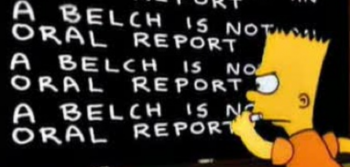Compact Discs Turn 25 Years Old
Its still an industry standard for storage, but is quickly being aged out as data needs demand more space and the media needs of consumers begin to change.

From the AP here:
It was Aug. 17, 1982, and row upon row of palm-sized plates with a rainbow sheen began rolling off an assembly line near Hanover, Germany. An engineering marvel at the time, today they are instantly recognizable as Compact Discs.
Those first CDs contained Richard Strauss’ Alpine Symphony and would sound equally sharp if played today. The recording industry thrived in the 1990s as music fans replaced their aging cassettes and vinyl LPs with compact discs, eventually making CDs the most popular album format.
Philips had developed the bulk of the disc and laser technology, while Sony contributed the digital encoding that allowed for smooth, error-free playback.
The CD’s design drew inspiration from vinyl records: Like the grooves on a record, CDs are engraved with a spiral of tiny pits that are scanned by a laser — the equivalent of a record player’s needle. The reflected light is encoded into millions of 0s and 1s: a digital file.
Because the pits are covered with plastic and the laser’s light doesn’t wear them down, the CD never loses sound quality.
Legends abound about how the size of the CD was chosen: Some said it matched a Dutch beer coaster; others believe a famous conductor or Sony executive wanted it just long enough for Beethoven’s 9th Symphony.
Sony sold the first player in Japan on Oct. 1, with the CBS label supplying Billy Joel’s “52nd Street” as its first album. The CD was a massive hit. Sony sold more players, especially once its “Discman” series was introduced in 1984.
By 1986, CD players were outselling record players, and by 1988 CDs outsold records. Now, the CD may be seeing the end of its days.
You can see how CD’s work here. Soon there will come a day when CD’s are replaced by a new portable media and data format. Or, perhaps portable media will go away completely. It is easy to see that instead of radios and CD players in cars, integrated media players take their place. And instead of buying CD’s music is something that is downloaded and then synchronized with the integrated media players, either through wireless technology or a thumbdrive.
And album art won’t go away either. Instead, digital albums will display art, music videos, liner notes and lyrics graphically on the media players. And the next big fight will be deciding how to standardize such media players.

I remember seeing a CD for the first time in 1984. I had no idea what it was since all I ever used by that point were cassettes and my moms old records (thats right baby, I am the 2nd leading cause of destruction to her ORIGINAL Beatles records). A friend’s brother had a sizable collection of CDs and I constantly wondered what they were. I liked the cases (which were huge back then) but couldn’t figure out how the little shinny things fit on a record player. I got my own CD player and started my collection in ’88 and had a pretty big collection of music, before most of my friends knew what they were.